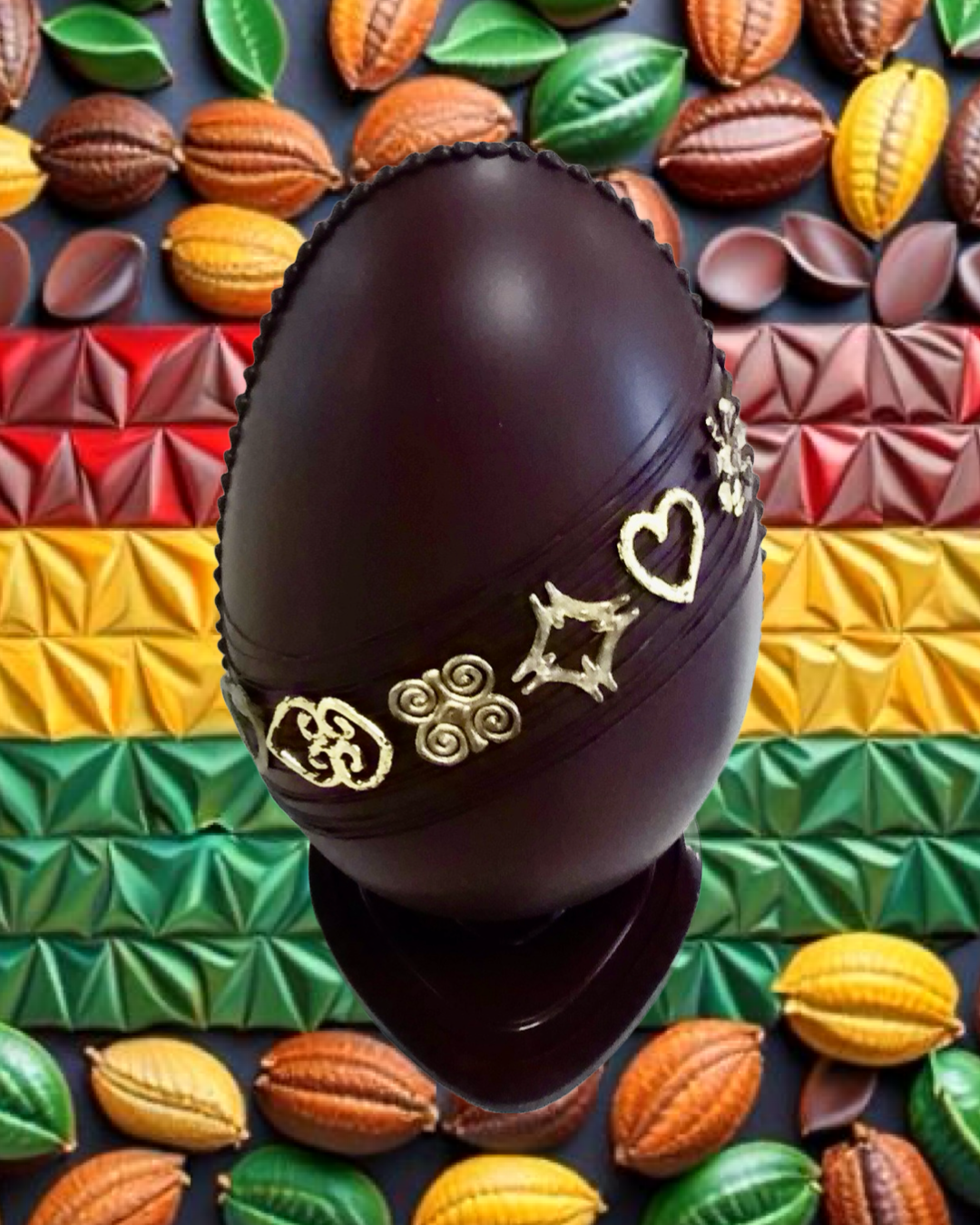Ever wondered why Easter egg chocolate always seems to taste better than a standard chocolate bar? It’s not just nostalgia—there are real technical factors at play that make Easter eggs a superior chocolate experience. Here’s why:
1. The Snap & Thinness
Easter eggs are typically much thinner than chocolate bars, which affects how they melt in the mouth. A thin shell creates a crisp snap, a hallmark of well-tempered chocolate. This also means the chocolate melts quickly, releasing its flavours and aromas more immediately, resulting in a richer and more intense taste experience.
2. Surface Area & Mouthfeel
The curved, delicate edges of an Easter egg mean it dissolves faster on the tongue, delivering flavour more efficiently. The large hollow structure increases exposure to air, which enhances the perception of creaminess and sweetness. This makes the chocolate feel smoother and more indulgent.
3. Tempering & Craftsmanship
A good Easter egg is usually carefully tempered, ensuring a glossy finish, crisp snap, and smooth texture. While mass-produced eggs are machine-tempered, artisan chocolatiers take extra care in the process, using high-quality cocoa and precise techniques. The result? A chocolate experience that feels more refined and luxurious.
4. Psychological Factors & Tradition
Part of what makes Easter eggs taste better is the anticipation and nostalgia. There’s something inherently fun and satisfying about cracking open an Easter egg and eating it in shards. Since we associate Easter eggs with indulgence and celebration, our brains naturally perceive them as tasting better than an everyday chocolate bar.
5. Are They Actually Made Differently?
Some mass-market Easter eggs use a slightly different chocolate formulation, optimised for spinning moulds into thin, hollow shapes.
However, artisan bean-to-bar Easter eggs often use the flooding or brushing method, allowing for more control over thickness and texture. With high-quality cocoa, this results in a far superior taste and mouthfeel.

The Perfect Easter Egg Experience
The combination of texture, snap, melt, craftsmanship, and nostalgia all contribute to why Easter egg chocolate often seems better than a regular bar.
If you’re a true chocolate lover, consider seeking out a bean-to-bar Easter egg made with premium cocoa—it will elevate the experience even further!
If you were to create a bean-to-bar Easter egg, you could play with:
Single-origin cocoa to highlight flavour complexity.
Different shell thicknesses to test how it affects snap and melt.
Unconventional shapes or textures (e.g., a ribbed surface to change the mouthfeel).
Filled or layered eggs with praline or ganache inside.
Have you ever experimented with handmade bean-to-bar Easter eggs?
With your expertise, it could be a fantastic seasonal addition to your chocolate range!
The UK chocolate Easter egg market is a significant segment of the country’s seasonal confectionery industry. Here’s an overview based on available data:
Sales Volume and Value:
Annual Sales: Approximately 80 million Easter eggs are sold in the UK each year.
Market Value: In 2024, the total spending on Easter-related products, including chocolates, gifts, decorations, and entertainment, was projected to exceed £2 billion, with an average spend of £53 per person.
Recent Trends:
Decline in Sales: Reports indicate that Easter egg sales experienced a 12% decline in 2024 compared to previous years. This decrease is attributed to factors such as rising inflation and a growing health consciousness among consumers.
Price Increase: The average price of an Easter egg in British supermarkets rose by 11% year-on-year, increasing from £2.27 in 2023 to £2.52 in 2024.
Consumer Behavior:
Celebration Participation: In 2024, over 84% of UK adults planned to celebrate Easter, equating to approximately 44.5 million people.
Purchasing Habits: Around 70% of consumers intended to purchase gifts for Easter in 2024, with Easter eggs being a popular choice.
Market Dynamics:
.jpeg)
Shift Towards Affordability:
Due to economic pressures, consumers have shown a tendency to opt for more affordable Easter egg options. Sales of premium brand Easter eggs fell year-on-year, with the average price of luxury Easter eggs increasing by 15% in 2023.
Impact of Legislation:
The implementation of HFSS (High in Fat, Sugar, and Salt) regulations has influenced retail strategies, affecting the visibility and promotion of Easter eggs in stores. This has contributed to changes in consumer purchasing behaviour.
In summary, while the UK chocolate Easter egg market remains substantial, recent economic challenges and shifting consumer preferences have led to a noticeable decline in sales and a move towards more budget-friendly options.

.JPG)